What Are the Different Types of Machine Guards?
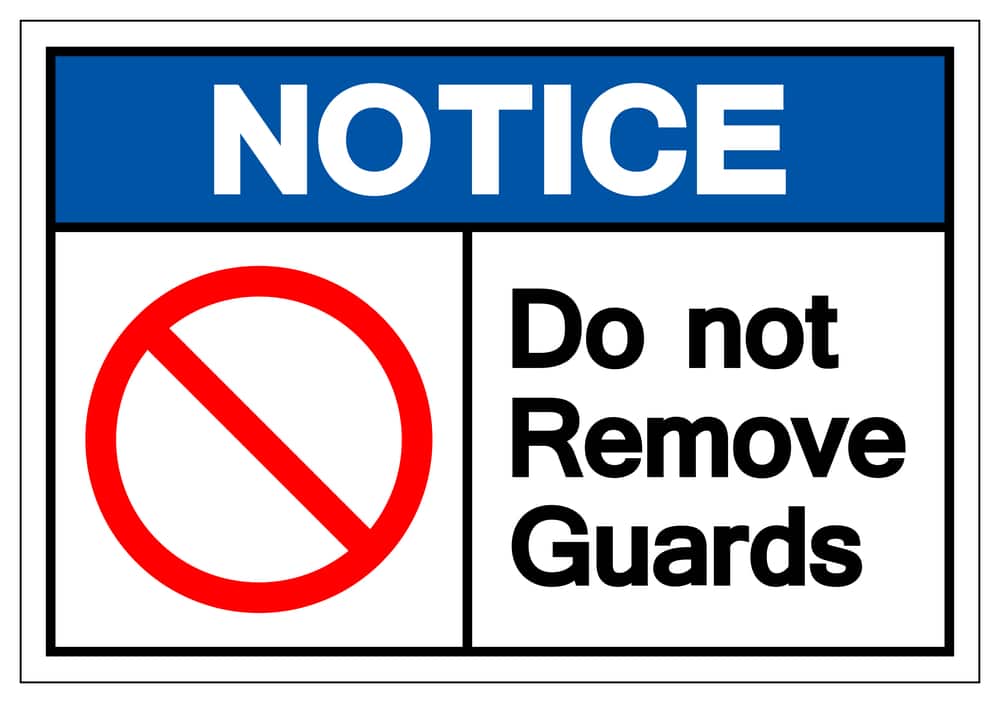
Why are machine guards important? Machinery is used across all industries today, including manufacturing, production work, and more. It is an essential piece to many business processes. However, operating a machine without the proper guards is a recipe for disaster.
Any machine has three parts: the power source and transmission that drives the machinery, the point of operation where the work happens, and the operating controls a human operator uses.
Moving machine parts can cause workplace injuries ranging from minor scrapes and cuts to crushed fingers, severed limbs, scalping injuries, lacerations, blindness (from flying chips), and burns.
Any machinery must have one or more methods of protecting employees against such injuries. Machine guards, also known as safety guards, provide a physical barrier between an operator and a danger zone.
Machine guards should be supplemented by safety devices preventing the machine from being operated.
So what are the different types of machine guards? Our guide explains all. We also offer video-based machine guarding training, an excellent complement to this write-up.
The Cost of Insufficient Machine Guarding
OSHA stats reveal around 18,000 severe injuries annually (including lacerations, crush injuries, and amputations) and over 800 deaths. Most of these incidents could be prevented by proper machine guarding.
The human cost for maimed or killed workers and their families is incalculable.
The financial cost can be calculated, or at least estimated, and is seen in everything from fines to workers’ compensation claims and higher insurance premiums.
OSHA has levied fines for worker injuries and deaths due to employer violations of machine guarding upwards of $100,000.
Proper machine guarding keeps the workplace safe, which is rewarded with lower workers’ insurance premiums and improved workplace morale and productivity. A safe facility is a happier and more profitable facility.
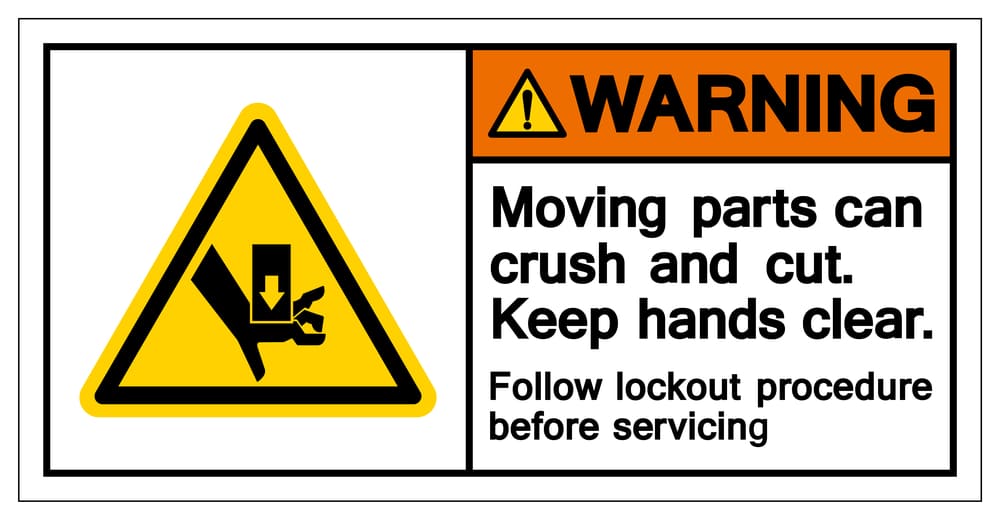
The General OSHA Requirements for Machine Guarding
Although every machine is unique and consequently requires its machine-guarding solution, there are certain basic requirements that OSHA sets forth for machine guards. (We also have an overview of the OSHA Machine Guard Standard that you should check out.)
So what type of machine guard does OSHA prefer?
- A machine guard must prevent contact between any part of a worker’s body and any dangerous moving parts.
- Barrier guards must be durable, firmly secured to the machine, and difficult to remove or bypass. If a guard must be removed for maintenance, this must not be possible without special tools.
- Safety guards must prevent objects such as small tools from falling into the machine’s interior, whence rotating parts could fling it out as a dangerous projectile.
- A machine guard must not create a new hazard, such as a sharp edge that could cut workers or a shear point (pinch point) that could entangle any part of a worker’s body or clothing.
- Machine guards must not impede the operator from performing their job, as they may tamper with the guard. Well-designed guards improve productivity by reducing workers’ worries about injury.
- Lubrication should be possible without removing the safety guard or entering the machine area. Oil reservoirs should be outside the machine guard and channel oil to where it is needed.
Why Safety Devices Should Also Be Used
Machine guarding covers the dangerous parts of engineering machinery and keeps operators and other employees safe. However, in some situations, using safety guards is impossible.
Safety devices use some restraint, limit, or sensor to keep operators from accessing the danger area. Most also prevent other employees from entering this zone. With safeguards, they provide maximum protection.
They may use electronic presence-sensing devices (such as photoelectric or radiofrequency capacitance sensors) that prevent operation if they sense an obstruction, such as a worker in a dangerous area.
A different safety device requires the operator to have both hands on the controls at a safe distance from any hazard. If one or both hands are removed, the machinery stops immediately.
Such a safeguard will protect operators but doesn’t prevent other workers from interacting with the hazard.
Trip guards are essential with some machinery. If the operator or anyone else trips or loses their balance, they may suddenly fall toward machinery and risk entering the danger area.
Trip guards prevent such accidents by utilizing a device such as a pressure-sensitive bar that the falling worker activates and stops the machinery.
Safety devices require less maintenance than guards and reduce the need for training and supervision.
However, they are not foolproof, and meeting OSHA safety standards generally requires providing safety guards to provide maximum protection to workers.
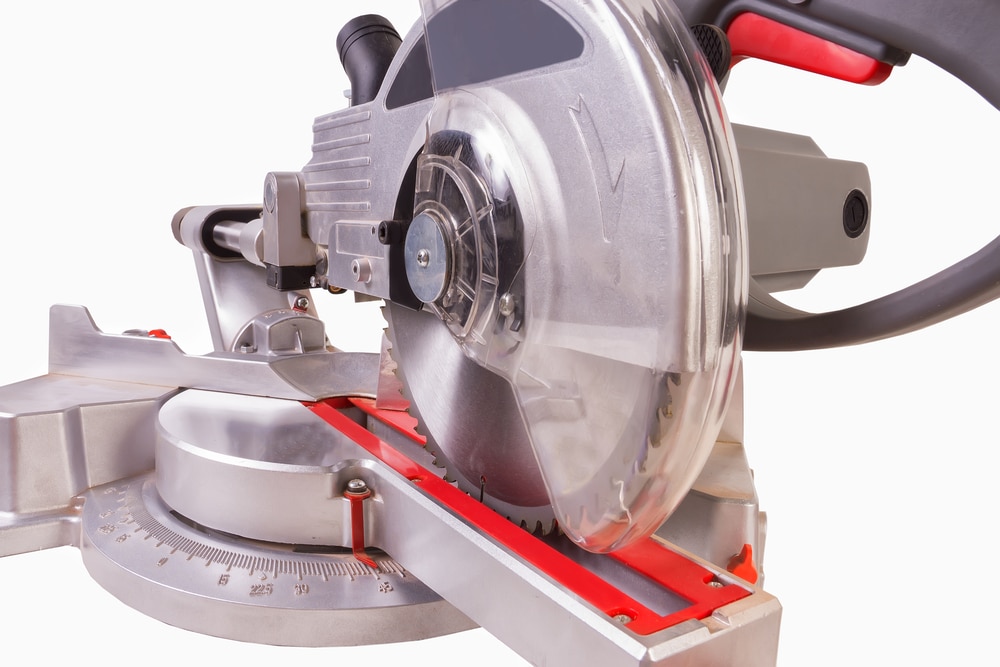
The Main Types of Machine Guards by Hazard
Safeguards can be categorized according to the type of hazard they protect operators against. So what are the four general types of machine guards by hazard?
Point of Operation Guards
As one would expect, the machine part that applies energy to the stock moving through it creates a dangerous area for workers, known as the point of operation.
Different types of machines create various potential hazards: they may cut (e.g., shears or power saws), shape or bend (e.g., power presses), or bore (e.g., a milling cutter) stock such as sheet metal.
Automated feeding and ejection features protect workers by removing any need for them to put their hands close to the point of operation.
Pinch Point Guards
There’s no standard term for these hazards, also called nip points, shear points, or in-running points. They refer to any area where moving parts and a stationary object can catch clothing, limbs, or hair.
Typically, these hazards are created by power transmission components such as drive belts, chains, pulleys, spindles, gears, flywheels, cams, connecting rods, and the like.
Guards Against Hazardous Motion
Even if moving parts do not create a pinch point hazard, they may produce other hazards: hair can get caught by rotating parts and inflict a grievous scalping injury.
Reciprocating motion, such as that of a piston, and transverse motion, such as that of a conveyor belt, can also create hazards.
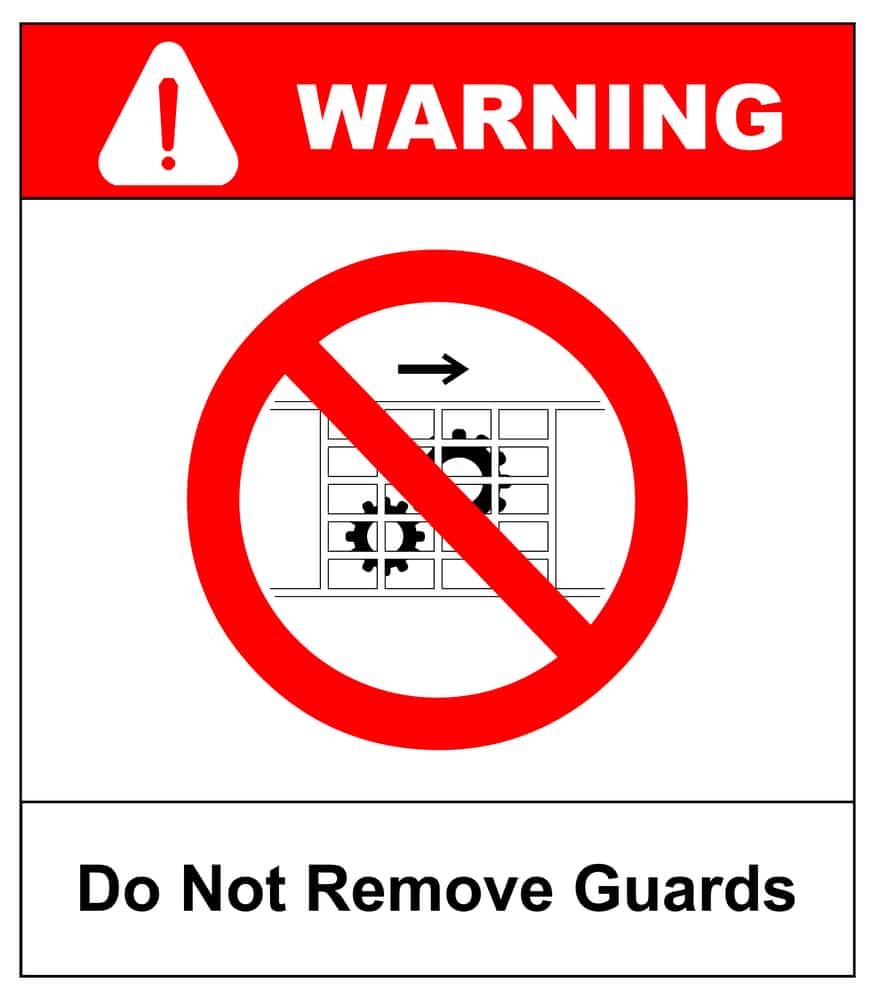
Flying Debris Guards
Machine operators and other employees in the vicinity can also be injured by debris spit out by a machine’s operation, whether flying chips, metal shards, sparks, or hot or toxic liquids splashes.
Machine guarding products and appropriate personal protective equipment (PPE) are necessary.
The Main Types of Machine Guards by Operation
Machine guarding solutions can also be categorized by whether they remain in place or move and under which conditions they move.
Fixed Guards
Fixed guards are permanent features with no moving parts: they are physical barriers preventing people from contacting dangerous moving parts at all times (unless physically dismantled).
They generally fit closely to the contours of the machinery, such as an enclosing guard around fan blades).
A fixed guard must be robust, permanently attached to the machinery, and prevent human contact with dangerous parts, even if it has openings for stock to enter and exit.
It may be necessary to ensure airflow for cooling or permit visibility; this should be considered when designing the guard, e.g., a mesh portion.
It may be necessary to open or remove a fixed guard to maintain or clear jams. Bypassing the guard this way should only be possible with a key or specialized tool.
Sometimes a fixed guard will be a fence around the machinery: the distance between the guard and the danger area should be as small as possible.
If a person can stand inside this fence while the guard is closed, the operating controls and safety devices should prevent the machinery from operating with someone inside the fence.
Fixed guards have some disadvantages, chiefly that they do not always prevent access to the danger area. They may also hinder operators from using the machinery.
Maintenance staff often leave fixed guards off after carrying out a maintenance adjustment. The maintenance manager should regularly audit whether such safety features have been replaced after maintenance.
The great advantage of this type of machine guard is the minimum maintenance the guards require.

Interlocked Guards
Interlock guards work on the same basic principle as lockout/tagout features: the guard is movable and connected to the power supply or machine controls, so opening the guard prevents machine operation.
An interlocked guard disables power to the machinery so that it cannot operate when the guard is not in place.
Either the guard cannot be opened until it is safe, or opening the guard stops the power flow so that the dangerous parts cannot move.
Interlocked guards permit safe access to the machine, whether to operate it or maintain it, without removing the guard.
An interlocking guard requires little or no training to use safely. However, it must operate correctly, making frequent maintenance and rigorous inspection vital.
Although interlocked guards cut power to the machine, there may be stored energy in the system (such as pressure in a hydraulic system, momentum of moving parts, or gravitational potential energy).
Braking devices or delays that block the guard from opening until moving parts have come to rest are necessary in such cases.
In addition to the basic requirements that any guard must fulfill, an interlocked guard should have a locking feature to prevent access on accident and prevent it from being left in a dangerous position.
Adjustable Guards
In some cases, it is impossible to prevent access to dangerous machinery parts, such as drills, circular saws, or milling machines, because the clearance will vary, and the operator must manipulate the workpiece.
In this case, adjustable guards or self-adjusting guards are used. An adjustable guard is moved to the correct position by the operator and remains fixed during a particular operation.
Cutting tools are generally challenging to guard except by adjustable guards. Unfortunately, adjustable guards need to be readjusted frequently (which may lead to operators not bothering to do so).
Because they permit some access to the dangerous part of the machine, they should only be used by a trained machine operator.
Devices that keep operators from putting their hands too close when feeding the stock should be used. The area must be well-lit with no tripping or slipping hazards.
Because the machine operator must gauge how to adjust the guard to maintain safety while permitting the machinery to operate, all operators must receive proper training.
In many cases, cutting tools also fling flying debris toward the operator’s face; a crown guard helps to prevent this.
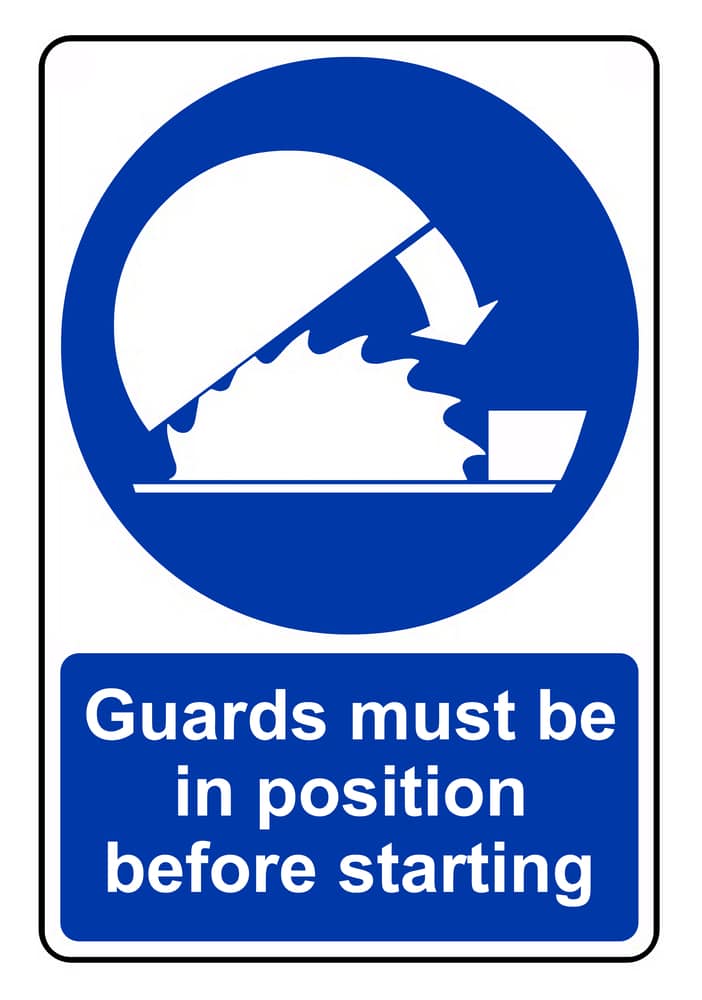
Self-Adjusting Guards
As the name self-adjusting guard suggests, this form of machine guarding self-regulates. Many portable circular saws have a spring-loaded guard that accommodates stock being fed in, while also affording protection.
As with adjustable guards, frequent maintenance is necessary. Because self-adjusting guards also allow operator access to the danger area, operators must be trained appropriately.
Self-adjusting guards require less training than adjustable guards, but frequent maintenance is indicated.
Manufacturer-Built Guards vs. User-Built Guards
What are the 2 types of machine guards, based on how they’re made? They’re generally divided between manufacturer-built and user-built.
Nowadays, some manufacturers supply point-of-operation machine safeguards as a standard part of the machinery.
Such guards have two significant advantages:
- They fit the machinery well and conform to their intended purpose.
- They often strengthen the structure of the machine and extend its functionality.
Many machine guarding solutions are user-built; manufacturer guards are generally unavailable in older machinery or are practicable in older plants with centralized power transmission.
Skilled designers can create guards customized to the specific functionality of a machine to enhance productivity and provide maximum protection.
Unskilled designers may create machine safeguards that are poorly built or do not complement the machinery’s form and function, hindering the operation and compromising safety.
Why Careful Maintenance and Proper Training Are Essential
The best machine guarding in the industry won’t help if the guards are not regularly inspected and maintained.
Maintenance
A proactive maintenance schedule that eliminates problems before they arise is better than just meeting the minimum maintenance requirements.
To protect workers and maintenance personnel, lockout/tagout procedures should be followed, and all guards replaced before returning a machine to service.

Training
Any system of guards and other safety features designed to protect workers against machine-related dangers will only succeed if the operators and other personnel are trained.
Training should inform operators of a machine’s hazards and how the safety guard prevents injury.
Workers should also know who may remove a safety guard, when lockout/tagout is required, and to whom to report a missing or damaged machine guard.
Machine Guards: The Bottom Line
Machine guarding is vital to workplace safety, protecting workers from injury or death and protecting employers against negligence penalties.
Ensure your workplace has adequate, OSHA-compliant guard systems to protect your staff and your business.